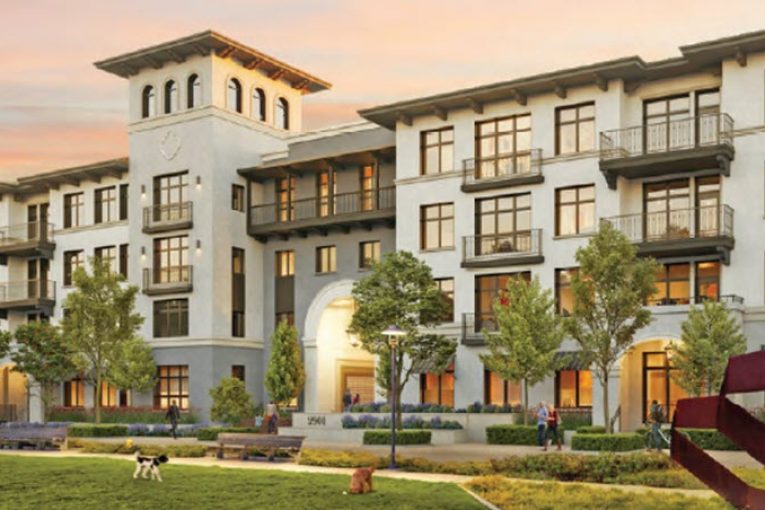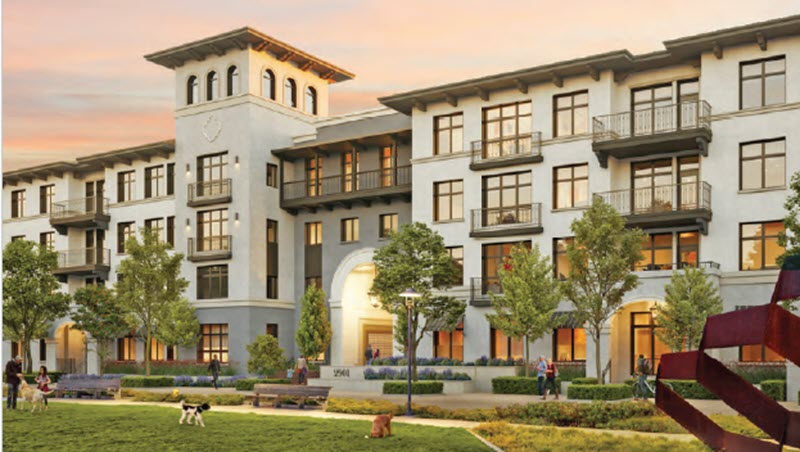

By David M. Greenwald
Executive Editor
My advice to folks in Davis is to watch what is happening around the state with regard to housing and various lawsuits.
An interesting one that came up this week is in San Mateo where a lawsuit was filed against the City of San Mateo, challenging its recently adopted Housing Element. This marks the first Bay Area lawsuit to challenge a Housing Element that has been certified by the State.
One of the changes in recent years, in response to the housing crisis, is it’s not sufficient to merely rezone land to housing—but rather there has to be a realistic chance that the housing sites are available, and the city has to be able to provide substantial evidence to the effect.
According to the lawsuit, “the City of San Mateo claimed to meet its fair share of the 2023-2031 regional need for housing – a number known as the Regional Housing Needs Assessment (RHNA) – by listing a number of sites where the city knew development was not  likely.”
likely.”
Basically San Mateo adopted an inventory that “claimed no zoning changes were required to meet its goals, listing properties where existing businesses are likely to continue as potential sites for new housing.”
Whereas cities are “required to show substantial evidence that the properties are likely to be available for residential development, including that any existing business on the property will be moving out during the eight-year period.”
“Cities should not claim that sites are available for housing unless they actually have the required evidence to back it up,” said Tom Mayhew of Farella Braun + Martel, the attorney for the Housing Action Coalition.
What will be interesting to watch here is whether the state supports San Mateo in their claims —since the state ended up certifying the Housing Element—or whether the litigators are correct, that the city cannot back up their inventory of sites.
For me this is another one to watch over the next several years, because as I have argued in Davis, it is going to be very difficult for the city of Davis to find enough sites to get its next Housing Element approved.
One key question will be how much housing the city will actually be able to find in the downtown. The city was wise not to count potential rezone units in the downtown for this RHNA cycle. We have already seen one of the downtown sites pull out because they couldn’t make the affordable housing numbers work for the Builder’s Remedy.
If housing gets built, that could count for the next cycle —the bad news is that the amount of affordable housing is not likely to move the needle very much.
The city has already acknowledged a lack of infill sites in town, and lawsuits like this demonstrate that the city will have to be very careful about counting rezones in town—unless they can really back up the fact that housing is likely to be built in the next eight years.
The city is clearly going to have to go peripheral in the seventh RHNA cycle and they are either going to have to amend Measure J to do so, or get projects approved prior to the Housing Element.
I am still skeptical that they can accomplish this, which why I continue to believe that the most likely outcome will be some sort of lawsuit to nullify Measure J.
It’s not going to happen tomorrow. It is more likely to happen in four to five years. There is not a huge amount of time or margin for error to avoid that.
Again, the San Mateo case is yet another case to watch because it will be interesting to see to if the courts are willing to go further than Housing and Community Development (HCD) in enforcing the substantial evidence standard of housing site availability.







It is important to remember that this lawsuit pertains to parcels that are withing the current City Limits of San Mateo. I agree with David that Davis could be vulnerable to a similar lawsuit for parcels that are within its City Limits … if the same “unlikely to be actually redeveloped” criteria exist.
However, the lawsuit has no relevance to parcels that are outside the City of San Mateo ‘s City Limits.
Yes, but that wasn’t the point. The point is that the city will not be able to just include redevelopment of one of the mini-malls unless there is substantial evidence of intent to redevelop. Or it can’t include the PG&E property.
I said this here a year or two ago when I did a deep dive into the RHNA; that there had to be a realistic chance of building housing planned for a certain area in order for those planned units to be accounted for for the RHNA. At the time I used examples of simply zoning industrial yards (which often have contaminants) for housing or planning for a 10 story building in a much less dense area without the infrastructure to support it. At the time I also referenced NIMBY pushback in that I thought that a city’s track record for getting housing approved would be taken into account. I think Trackside was what I was thinking of at the time.
I think the closer analogy was for example the city identifying the site at Montgomery and Mace owned by the Catholic Church as a site available for redevelopment. However, the Church said no. So the city had to pull back the site.
What is interesting to me is that this lawsuit is NOT being brought by the state, or a local developer but by a pro-housing non-profit: https://housingactioncoalition.org/
Not a player or scenario that I have seen discussed here before.